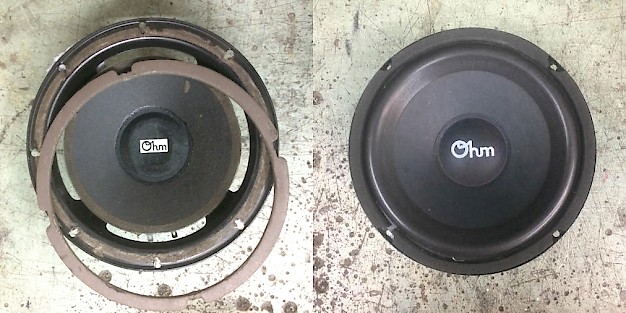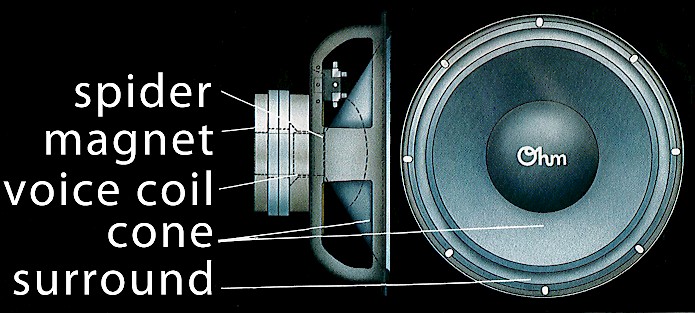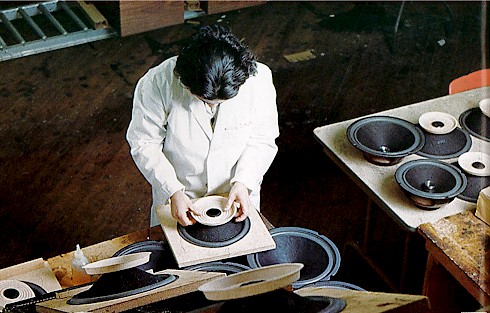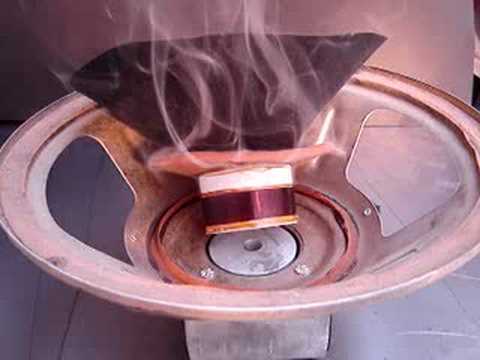Do speakers age more with use or non-use? Are there things to do to maintain speaker sound quality?
To enjoy your speakers fully, they need to be performing at their best. You can expect years of good music from your speakers. Some parts of speakers need periodic maintenance while other parts last for decades. Some parts fail from age with or without use while other parts will never wear out.

Speaker Surrounds, not Surround Speakers
The surround is often the most troublesome. The surround is the flexible membrane between the cone and frame of most traditional woofers and tweeters. In the 1960’s a surround made out of artificial (plastic) foam rubber was developed to allow longer linear excursion for acoustic suspension woofers. It also damped the cone resonances better than the prior cloth or rubber surrounds. Plus, it was easier to use and cheaper to build. The foams they used were bio-degradable and would fall apart, whether in use or in storage, after ten to thirty years. This may be good for the environment; but it means many, if not most, consumer speakers made in the late twentieth century are in need of maintenance if they still have all the original parts. If you can poke your finger through the surround, it needs changing. It is best to use the original manufacturer’s surrounds to try to maintain the original quality. Many places do speaker re-surrounding; but few of them know how any given speaker was designed to play. There is major sound difference between playing and playing correctly.
There are other major moving parts like the spider, voice coil, and cone that may have very small changes over many years. In general use without abuse, these will last for decades. There are many Western Electric speakers made in 1950’s playing fine today with 60 years of use!

Switch Hitting
If the speaker has controls (switches or knobs) to adjust the sound, their internal parts like the contacts can oxidize over time. This will cause a scratchy sound from the speaker when the controls are used. It can become so severe that the sound drops out completely at some settings. Ohm used and continues to use ‘self-cleaning’ switches, so if you encounter this problem, just work the switch back and forth a few dozen times and the problem usually goes away for many more years.
Electronic Components
Capacitors are the parts in a speaker’s crossover that prevent lows from moving through a circuit. They are the critical parts that keep the bass meant for the woofer from getting to the midranges and tweeters and possibly damaging the speaker. There are two major types of capacitors – film and electrolytic. Electrolytic were the most popular for many years as they are inexpensive and reliable. Film capacitors tend to be larger and more expensive for any value. But film capacitors typically handle higher voltages and are more stable (in value) over time. Electrolytic capacitors more often change value and lose voltage rating over years of non-use. Even if the speakers are only used occasionally up to the maximum levels you desire, these aging effects are minimized if not eliminated.
Avoiding Overdrive
Most speakers are resilient and can take minor abuse without significant long term damage. Yes, it is possible to ‘blow’ a speaker with a big or small amplifier turned up too far. In fact, more damage is done with small solid state amplifiers turned up into high distortion (with too much energy going into the small, light tweeters) than with big amplifiers ripping apart woofers and midranges with excessive undistorted power. This problem with small amplifiers is called ‘clipping’ and is a major source of damage to speakers.
When you have a big, undistorted amplifiers, the speaker can be damaged either by mechanically breaking (or wounding) some moving part of the speakers or by melting some of the electrical parts of the speaker.
Every speaker has mechanical limits that can cause damage when driven too hard. If the surround is pushed beyond its maximum distance, the speaker will typically make a thuncking sound as the cone comes to a moderately fast stop. If this abuse continues, the surround may rip or the cone may fold to allow longer excursion of the voice coil. It is best to turn the amplifier down whenever you hear this non-musical event.

The spider is the part of the woofer that centers the voice coil in the magnetic gap. If the spider is pushed beyond its linear range, the voice coil can tilt and hit the sides of the gap. This generally causes a rubbing or scraping sound. If it continues for some time, the spider can tear, and the unnatural sound will be heard at all listening levels. This will require repair work; so again, turn the amplifier down at the first sign of these un-musical sounds. If both the surround and the spider have plenty of linear excursion and your amplifier has plenty of undistorted power, eventually as you play louder and louder, the moving parts will ‘bottom’ on the chassis or magnet assembly. This typically makes an excessively loud crack like a shot from a gun – even like a machine gun. This is generally very damaging and the speaker will usually need maintenance.
Not Too Hot
If the driver is big enough to achieve the sound levels you desire and your amplifier can provide enough undistorted power to reach these levels, it is still possible to overheat the electrical parts of the driver. Most home stereo speakers convert only 1% of the electrical energy into sound energy, so 99% of the energy is turned into heat. Dynamics, the range of loudness from minimum to maximum, is one of the most enjoyable parts of music, particularly in classical music. The average amount of energy is usually very low compared the peaks when the drivers are played at any level.

Size Matters
Both the size of the speaker parts and the size of the room they are used in affect the power handling. The tiny voice coils in tweeters and super-tweeters can only dissipate a very tiny amount of heat. So, they can fail even on short peaks. With the heavier voice coils in midranges and woofers, they can usually absorb the short term peaks and fail only after long-term, high-level sessions. What is a long-term, high-level session? I can’t give you numbers, but there is a direct relation to the room size. So, if one room is twice as big as another room, the speakers needed to fill it to the same sound level will need twice as much power handling. This explains the need for massive speaker arrays in use by multiuse venues like the Barclay Center.
Conclusion
It is very important to be listening to your speakers when they are playing very loudly and to turn them down if you hear something that is not in the music. If you have not played a particular pair of speakers for a few years, start playing it softly, and slowly (over a few days) increase the level until you achieve the levels you had enjoyed; or shut them down if they make bad sounds. It is reasonable to expect many years of good sounds and it is reasonable to expect to do some periodic maintenance to keep the speakers sounding their best.